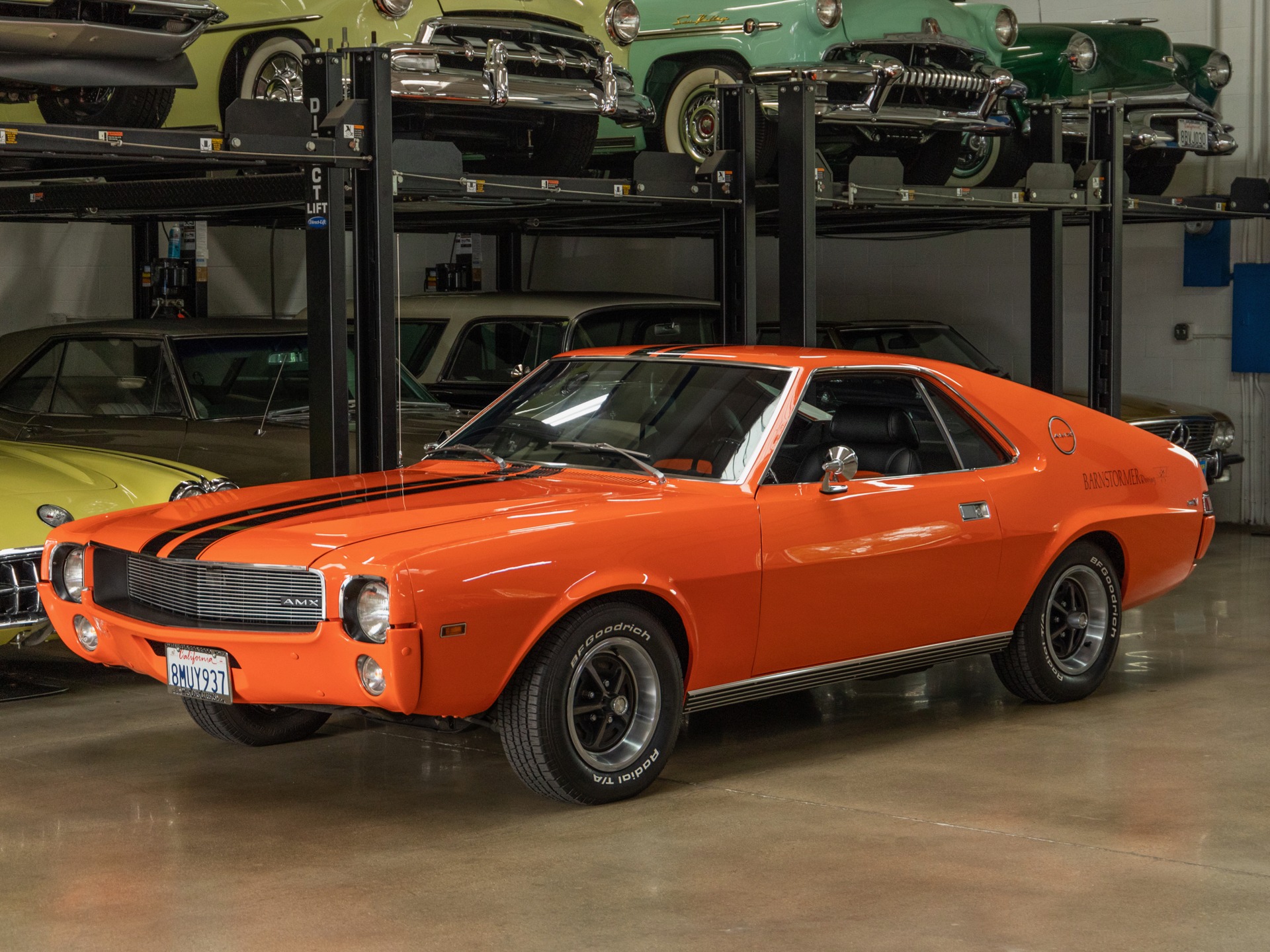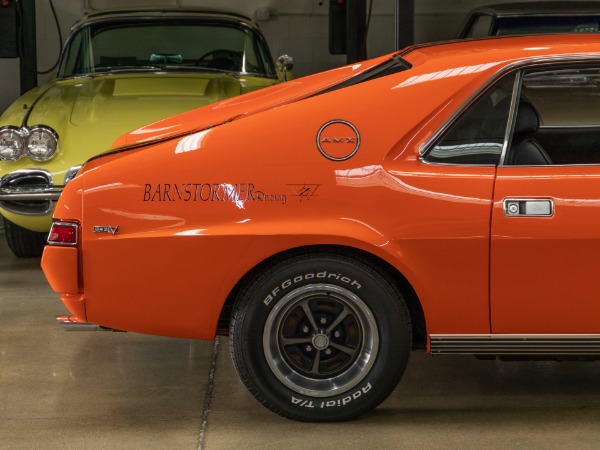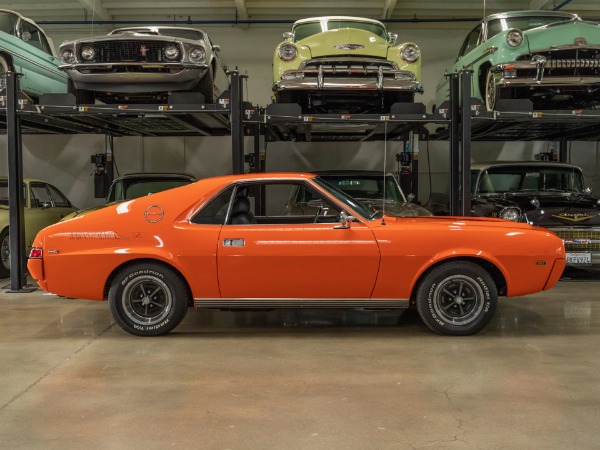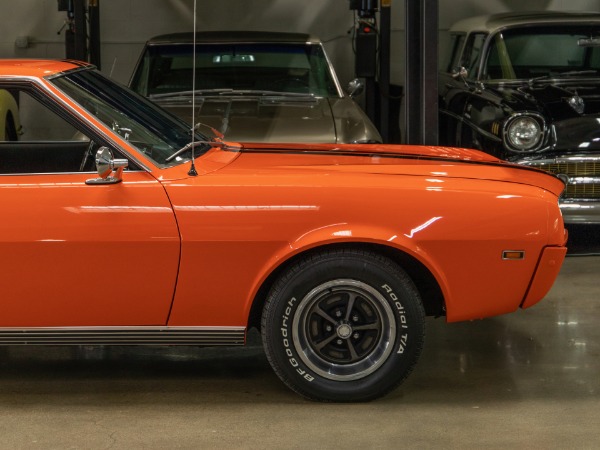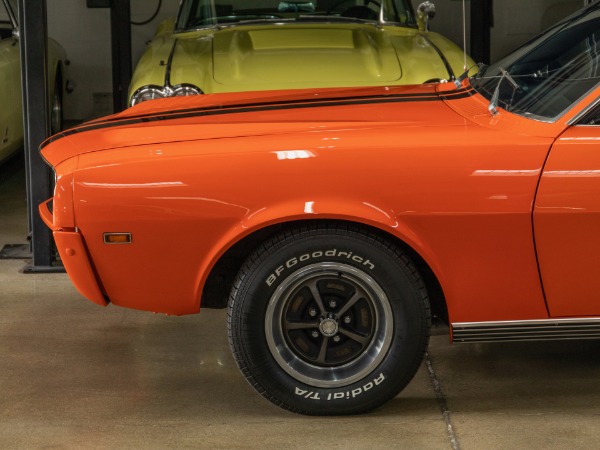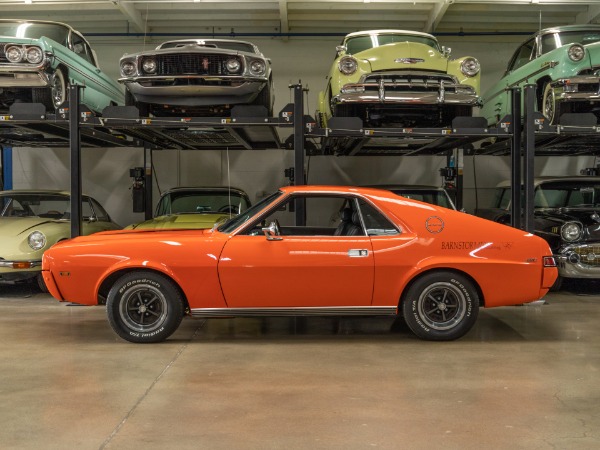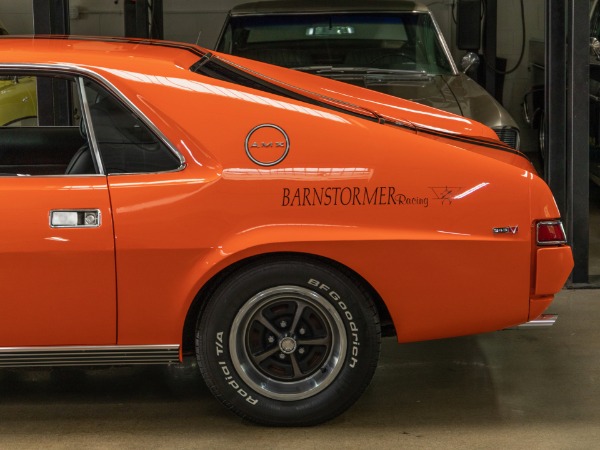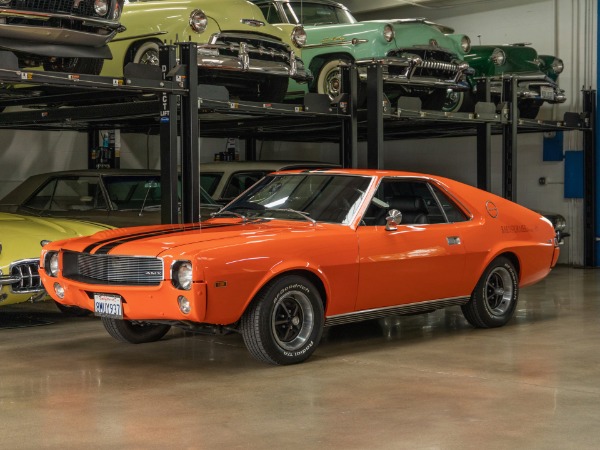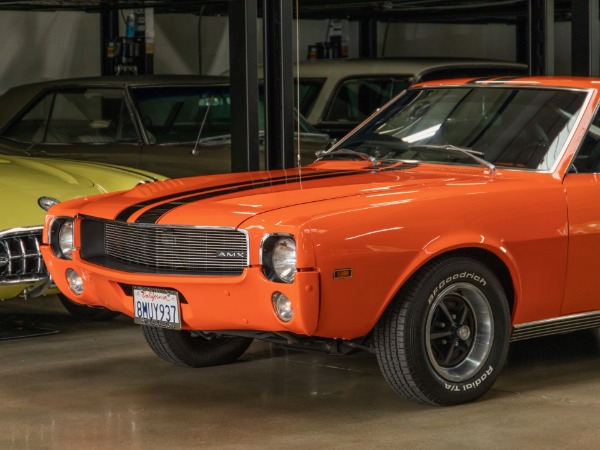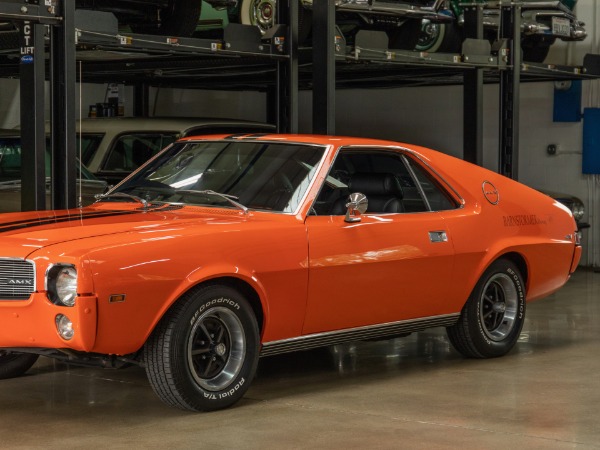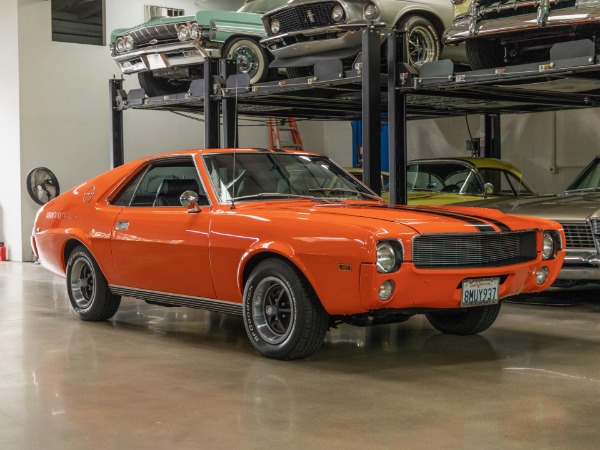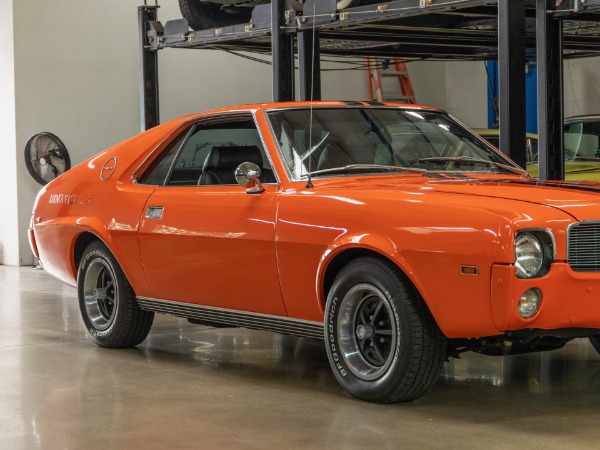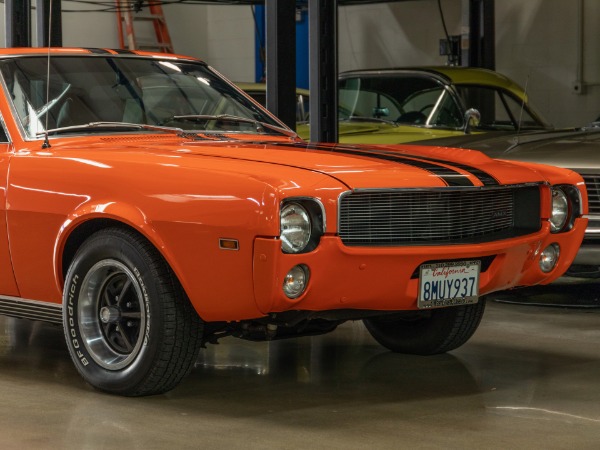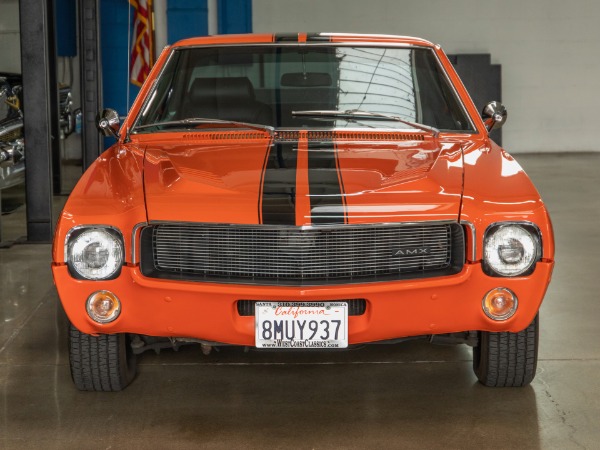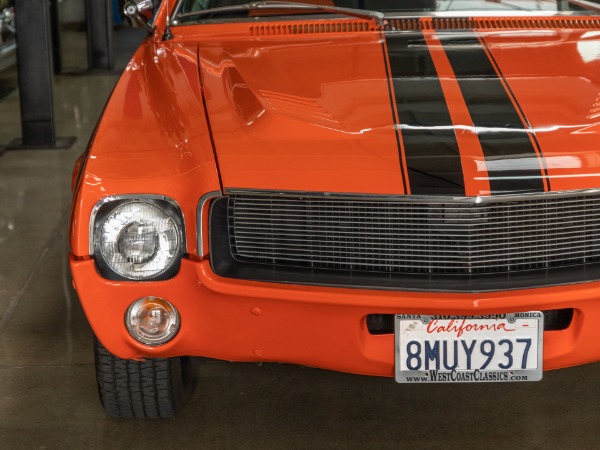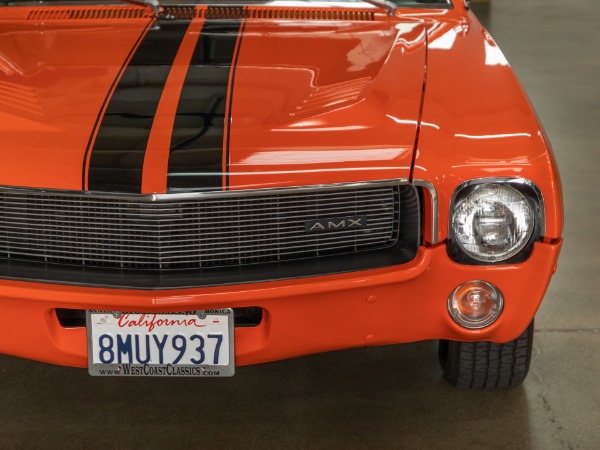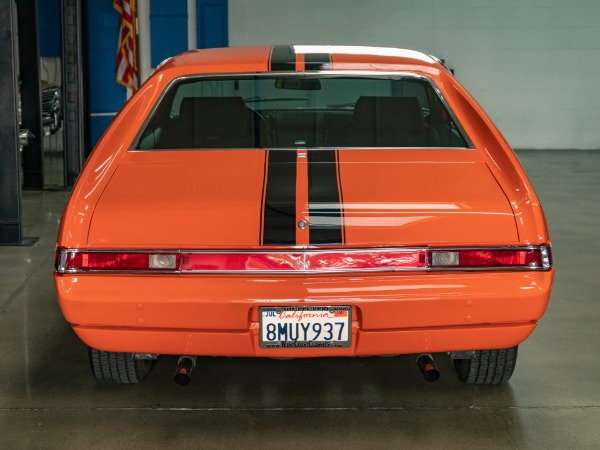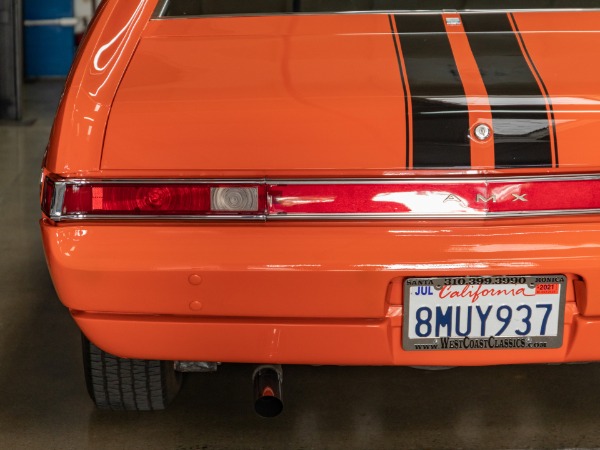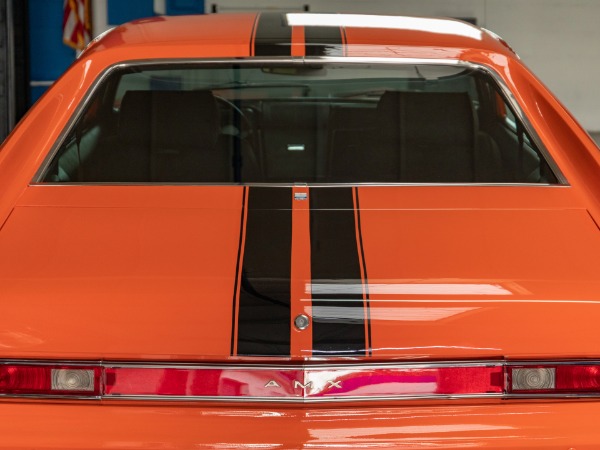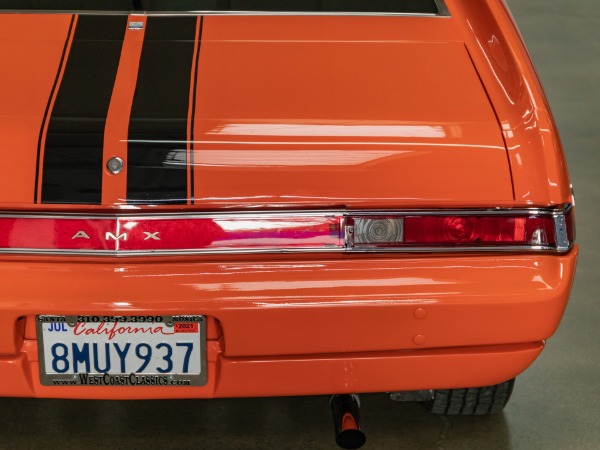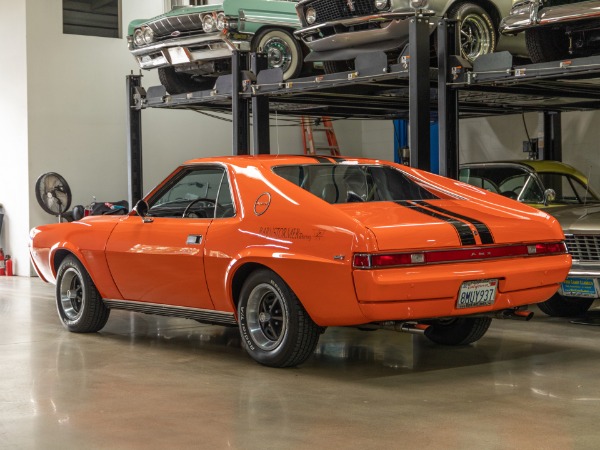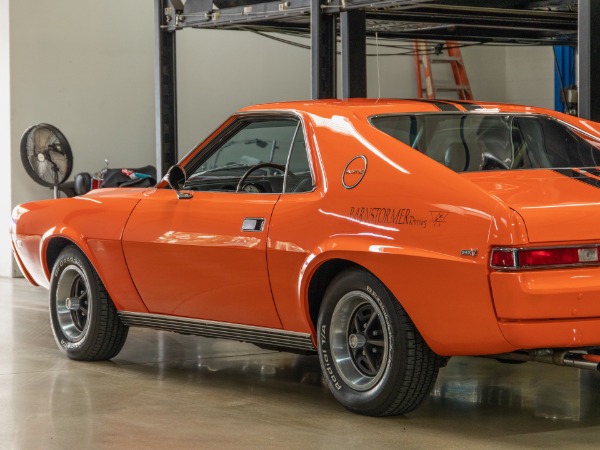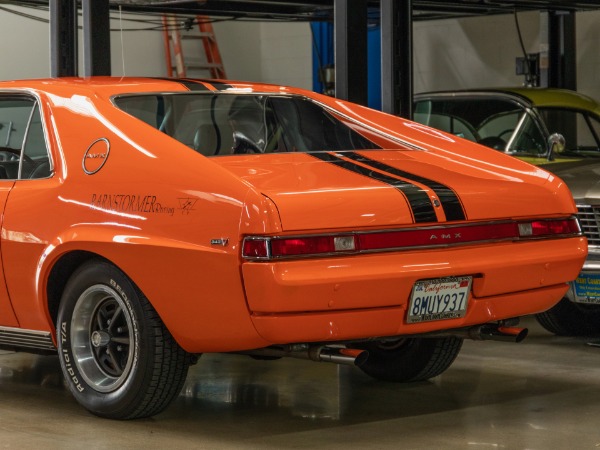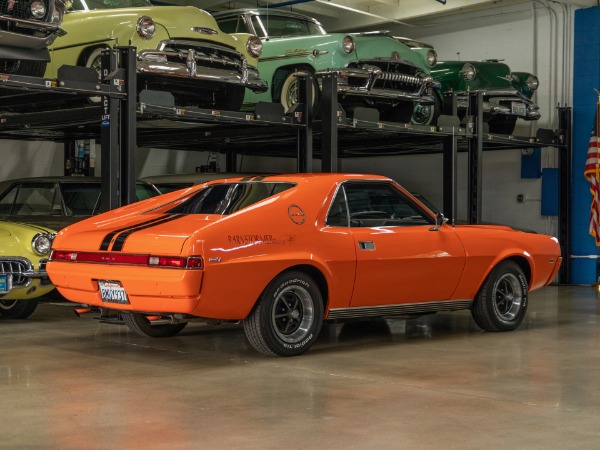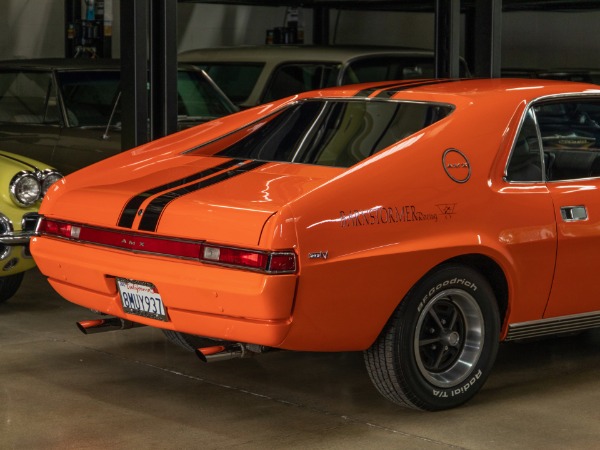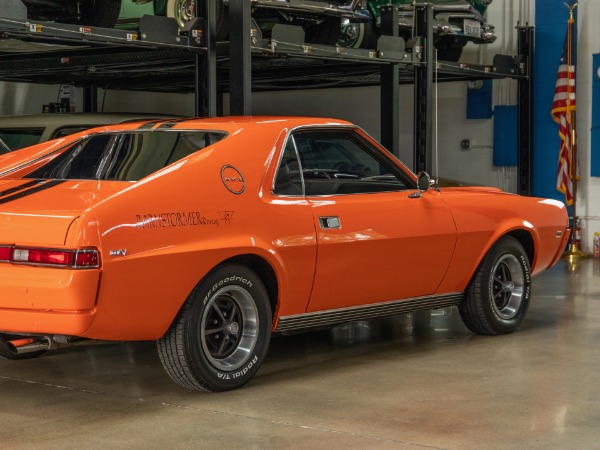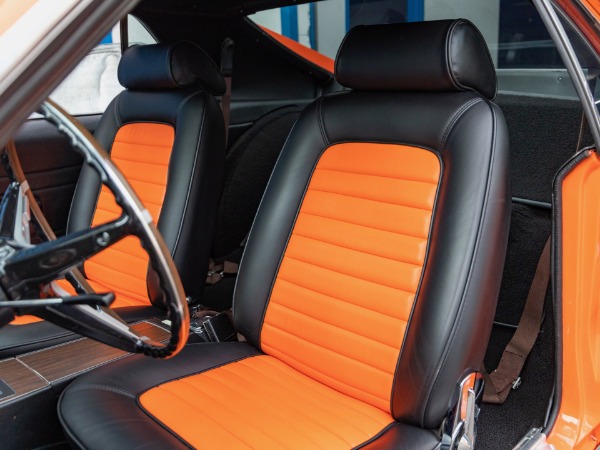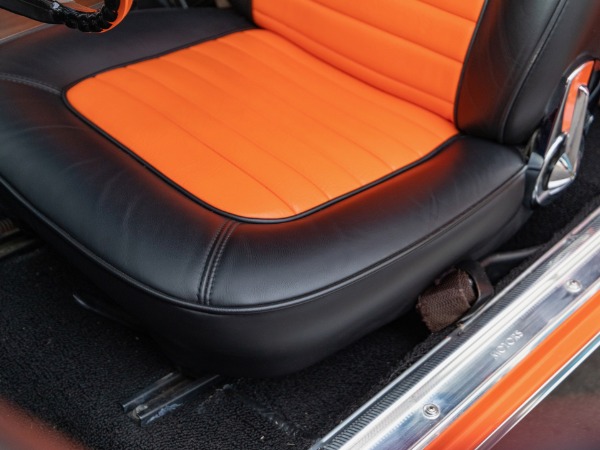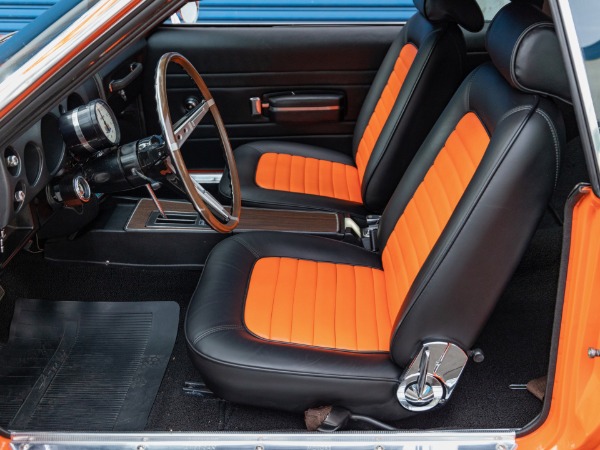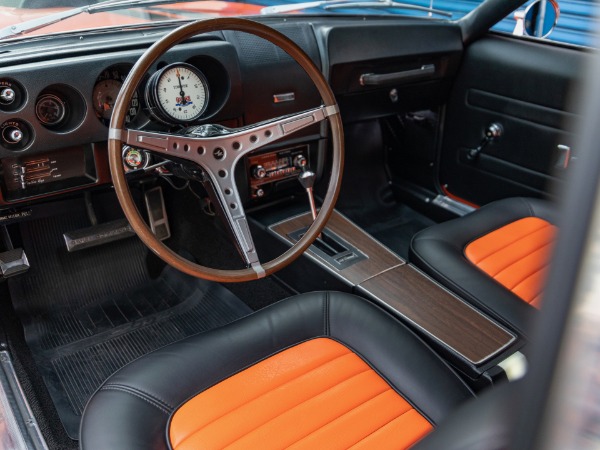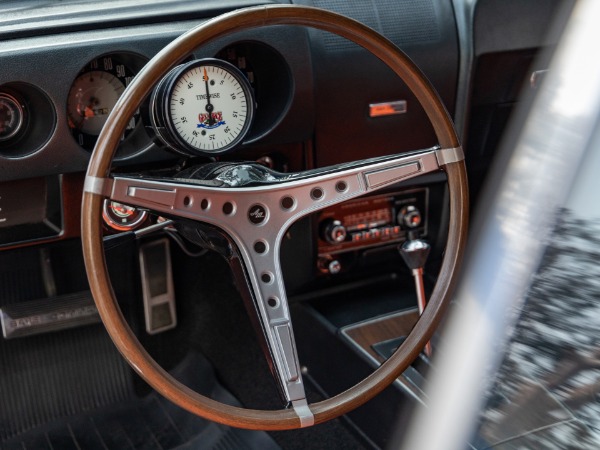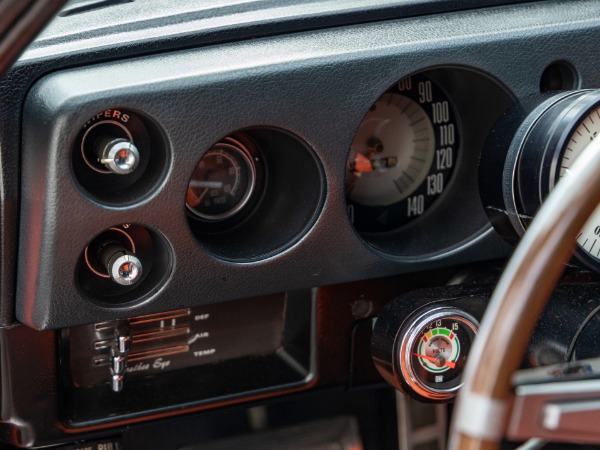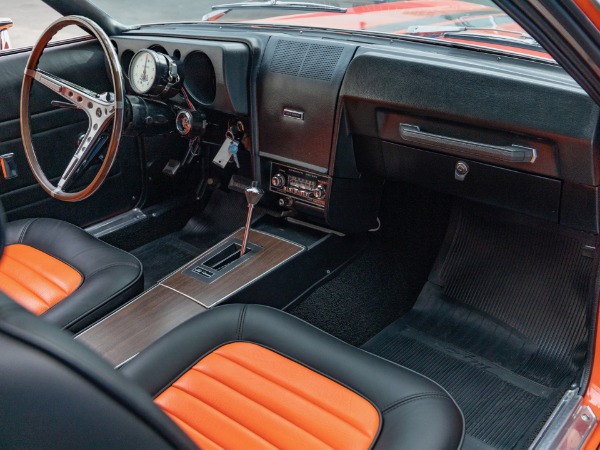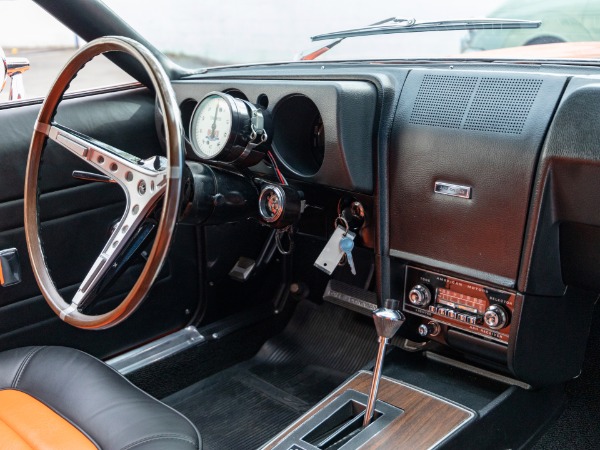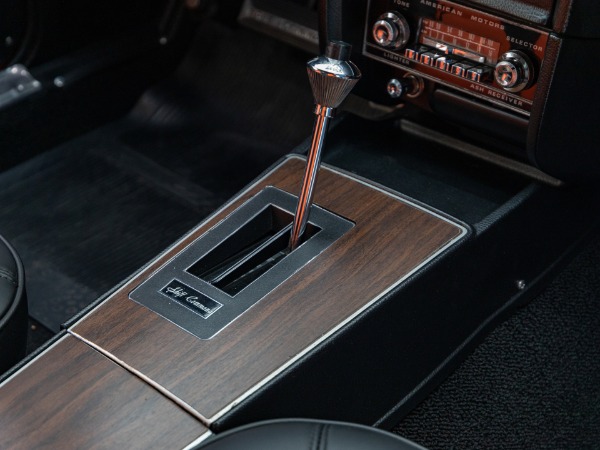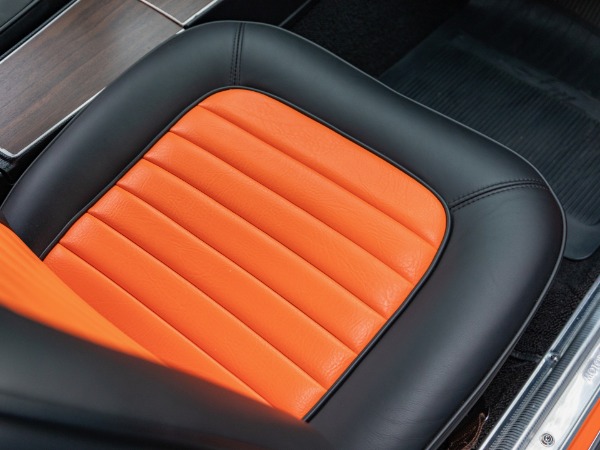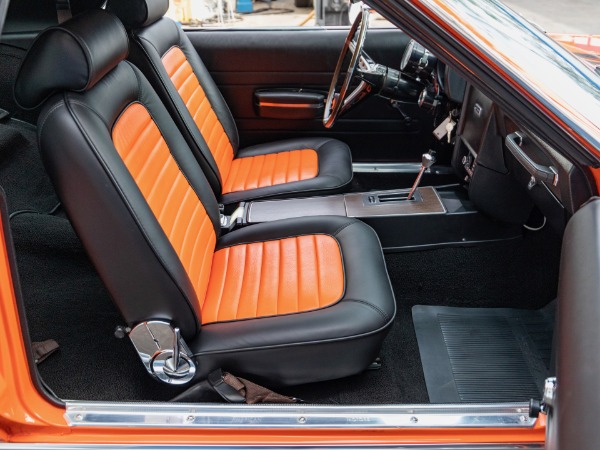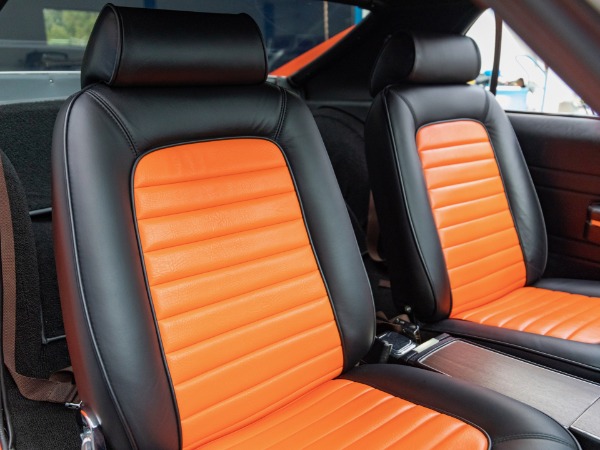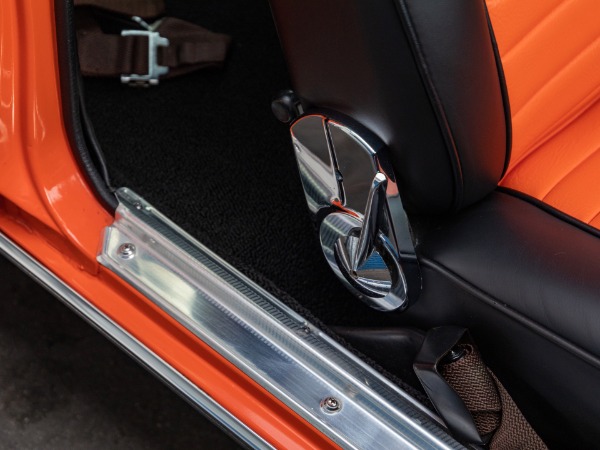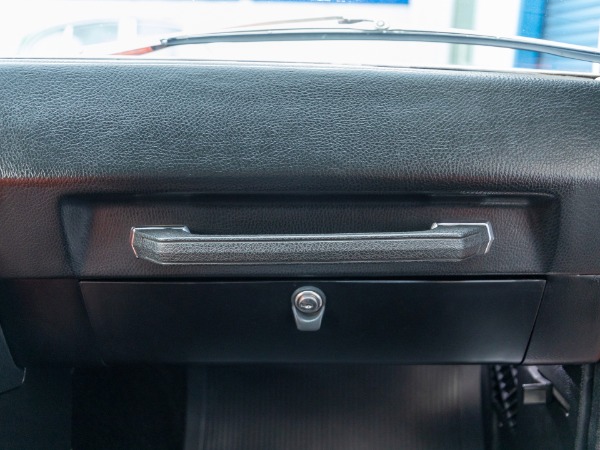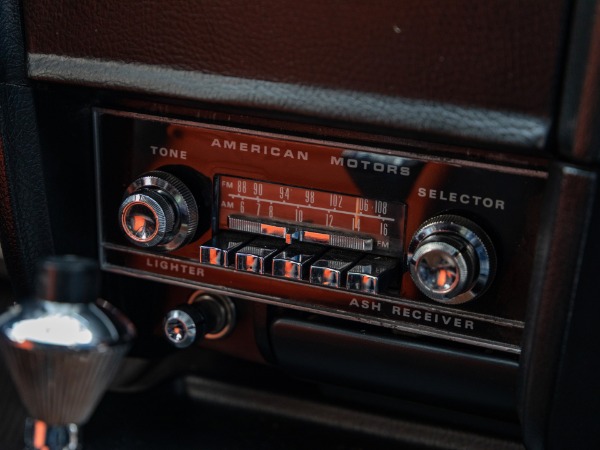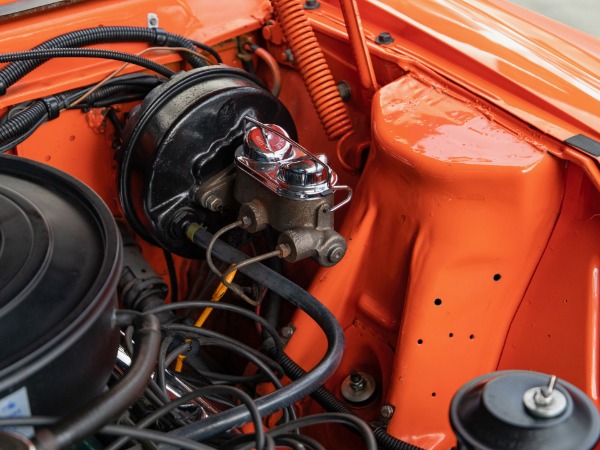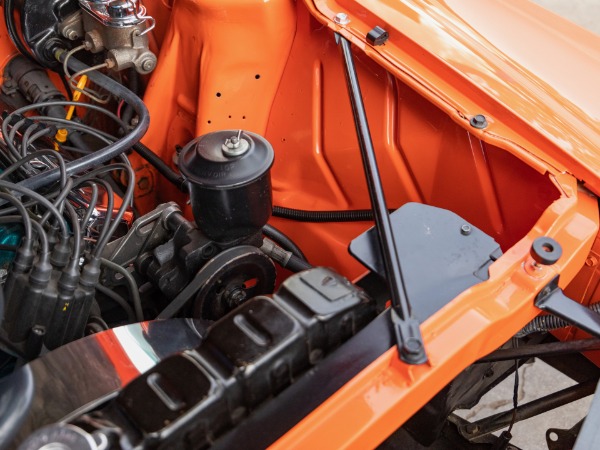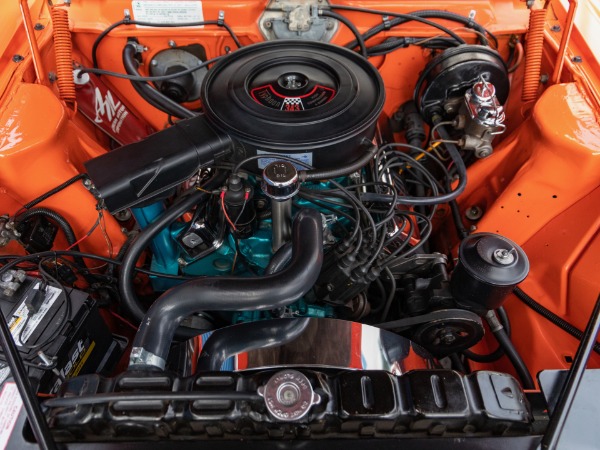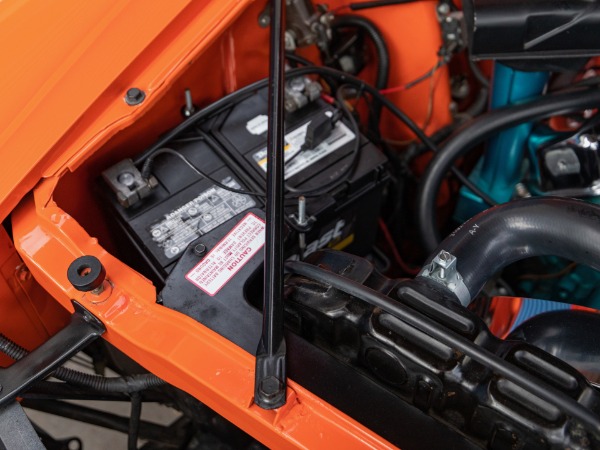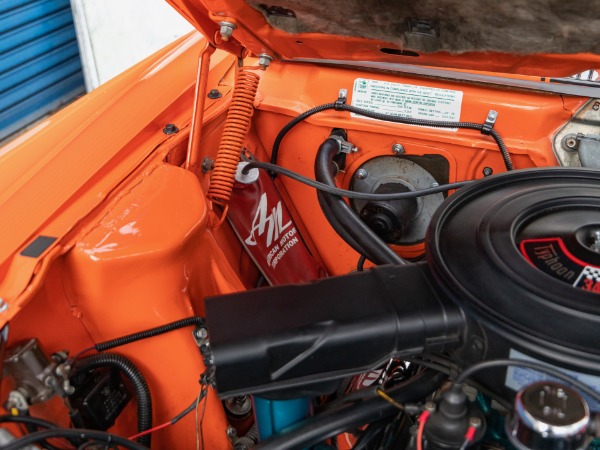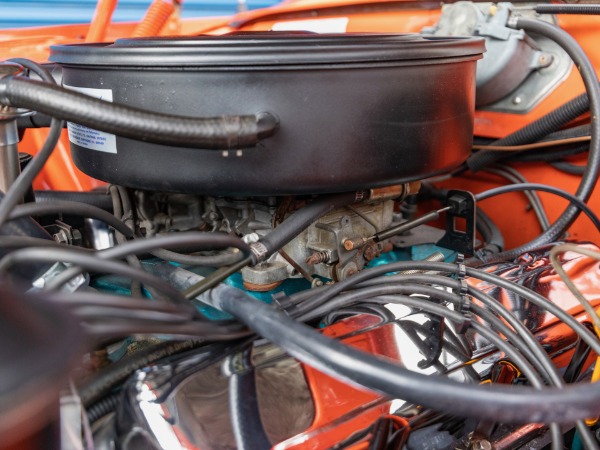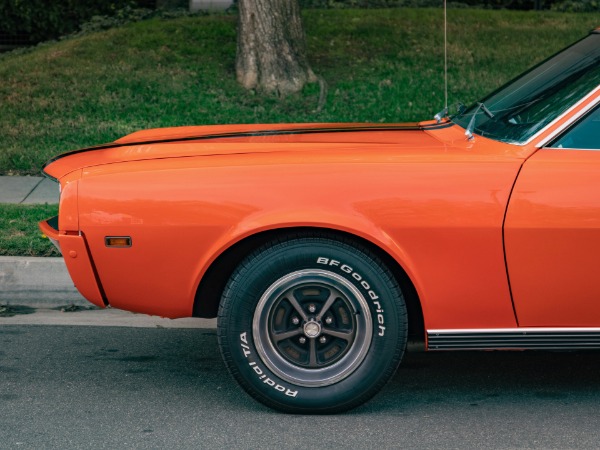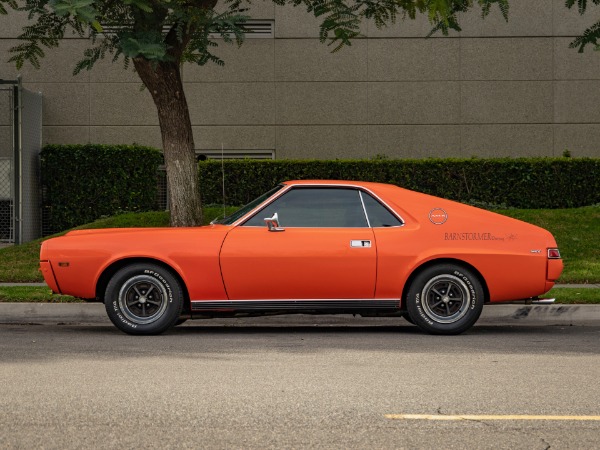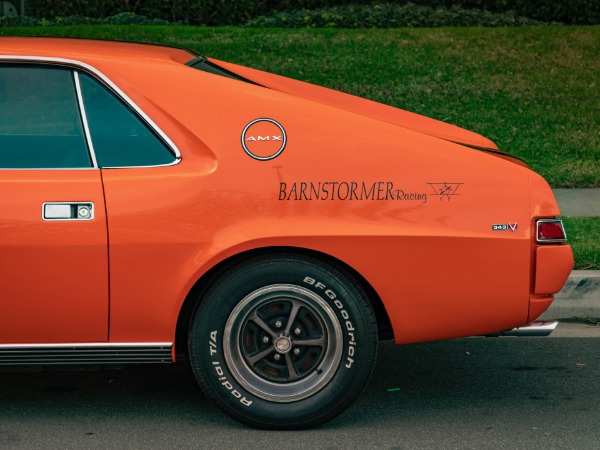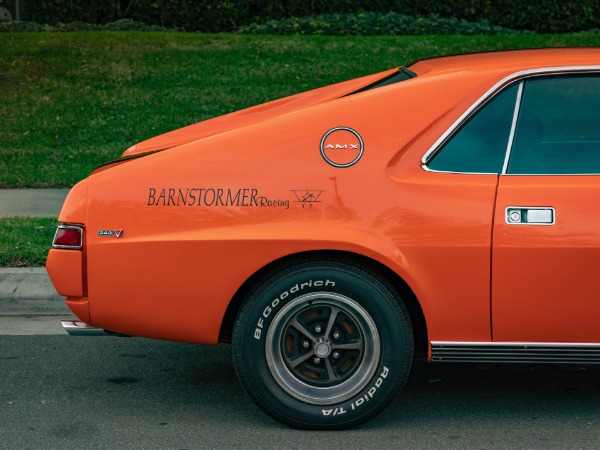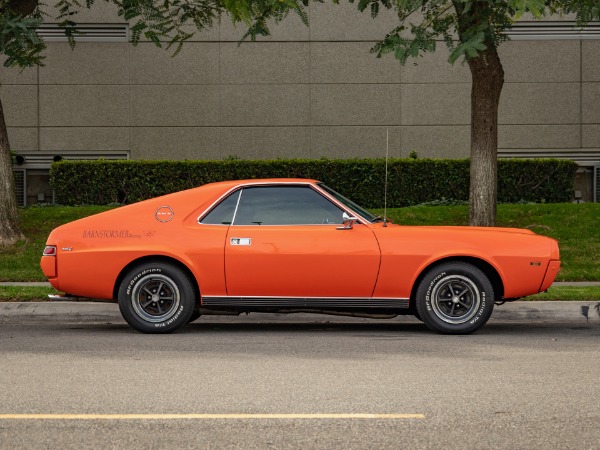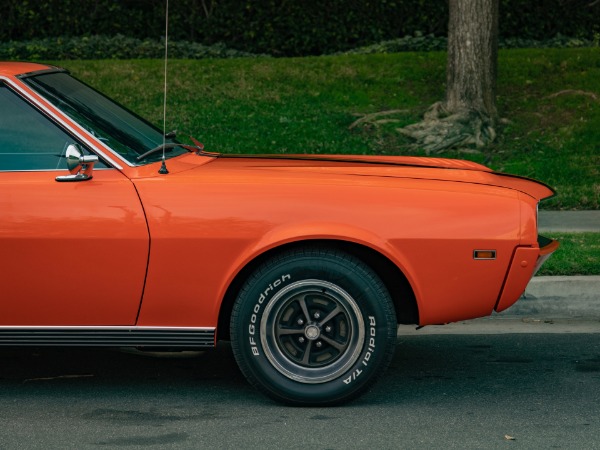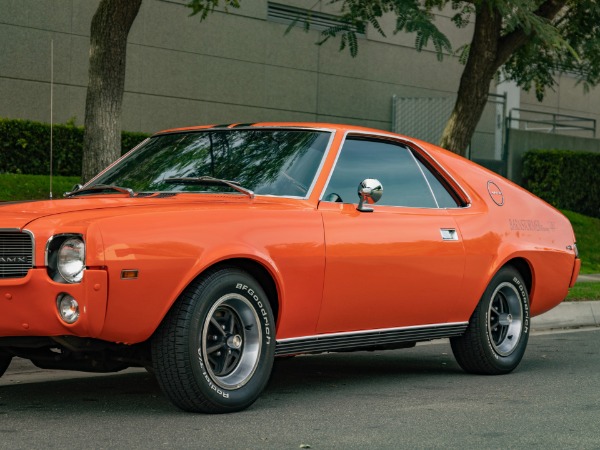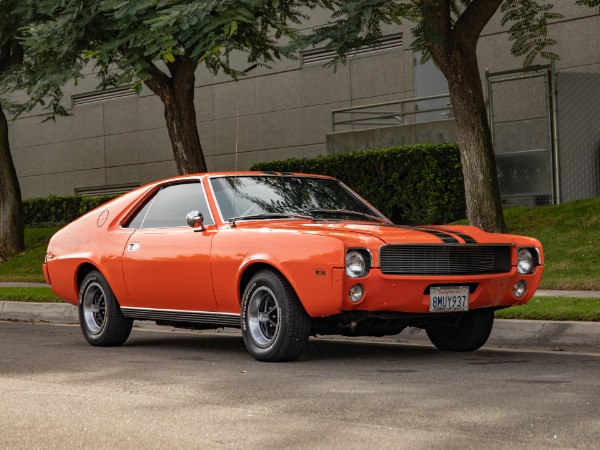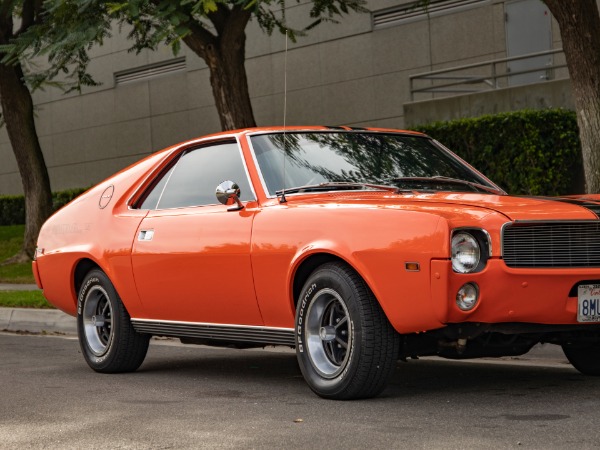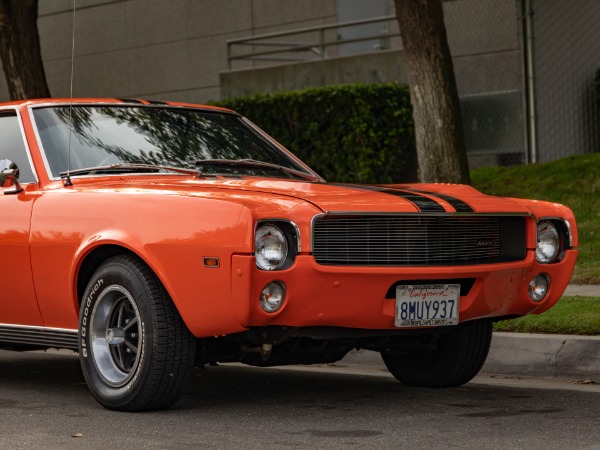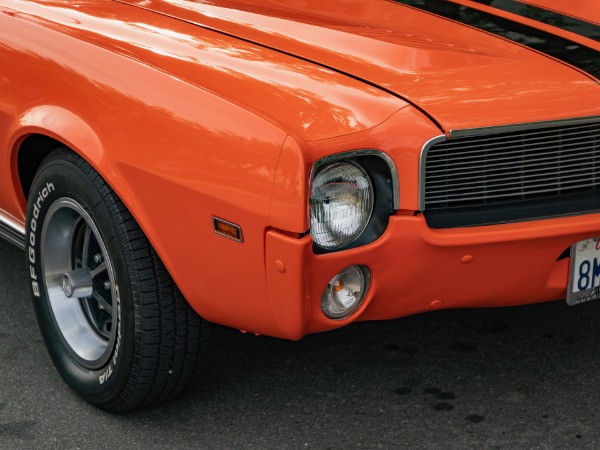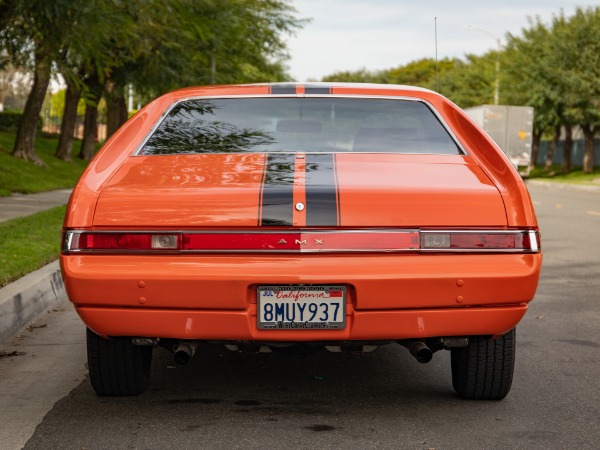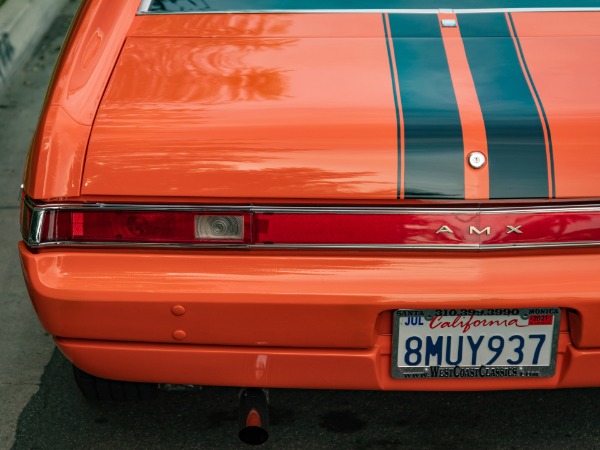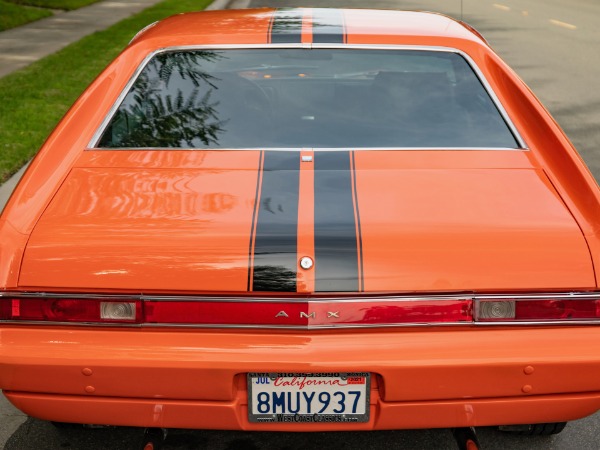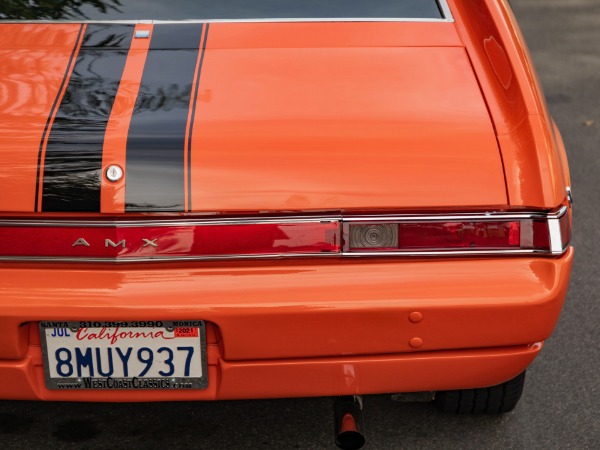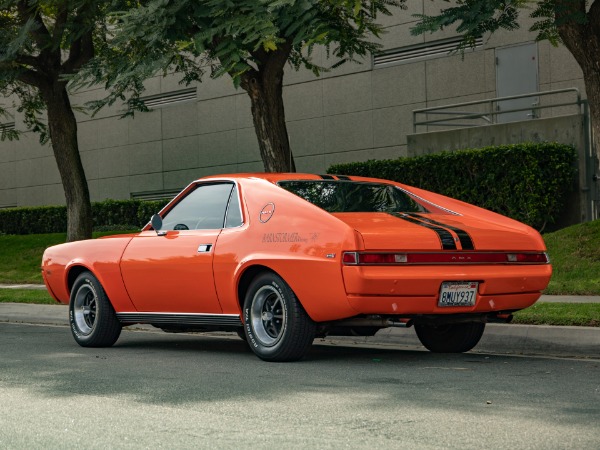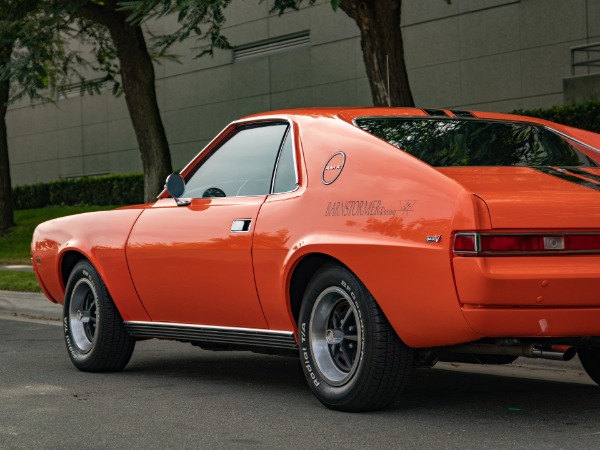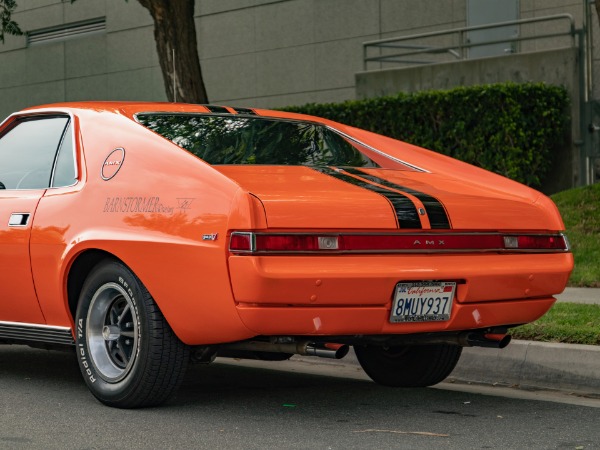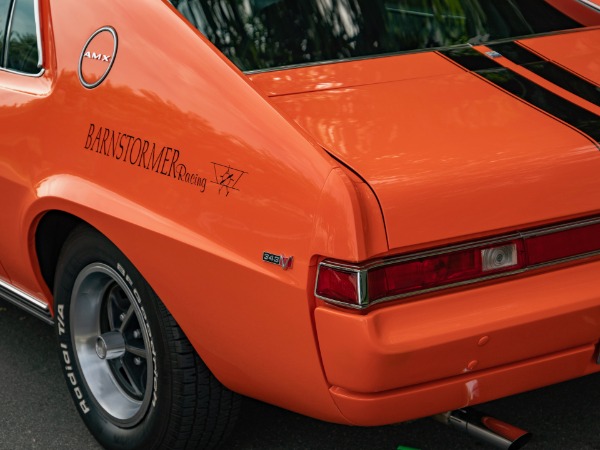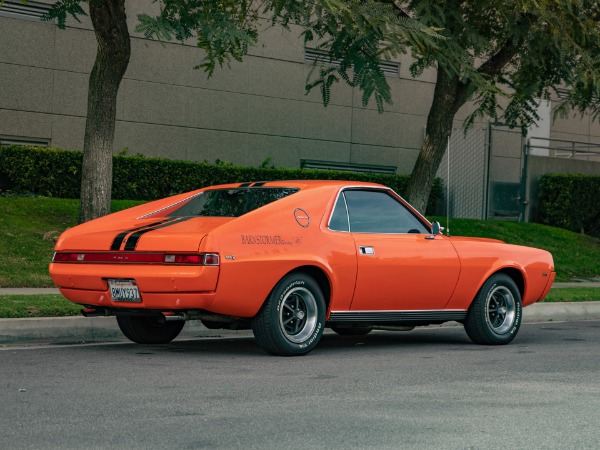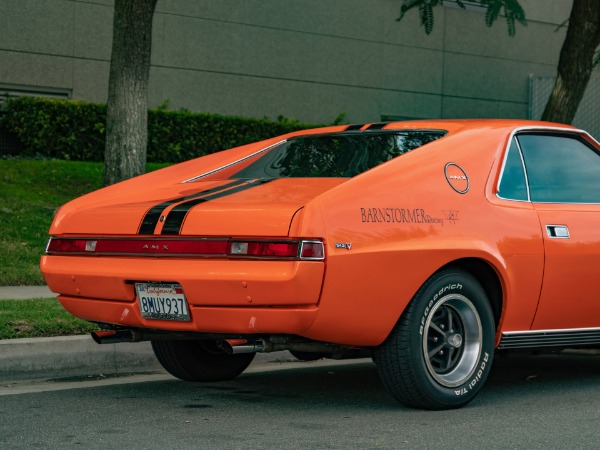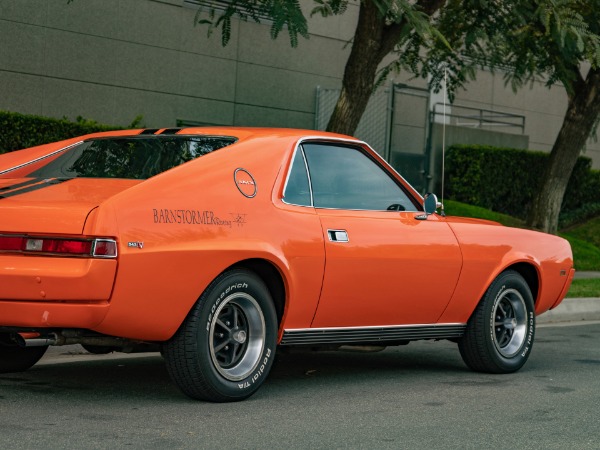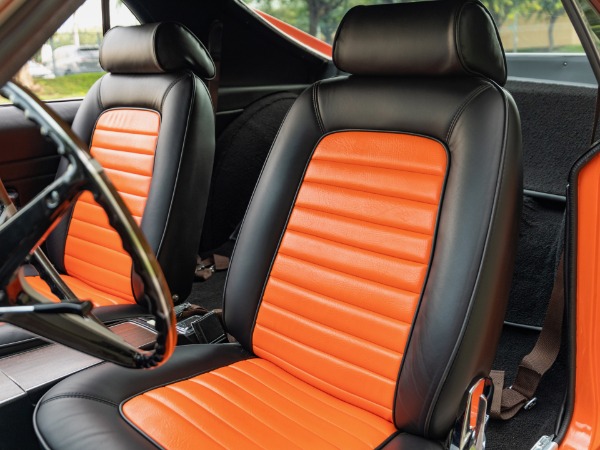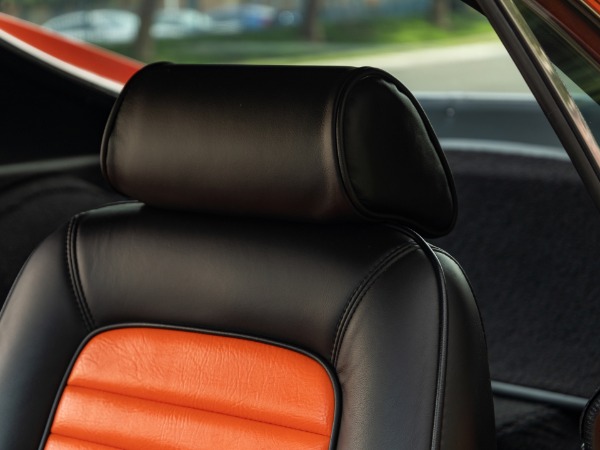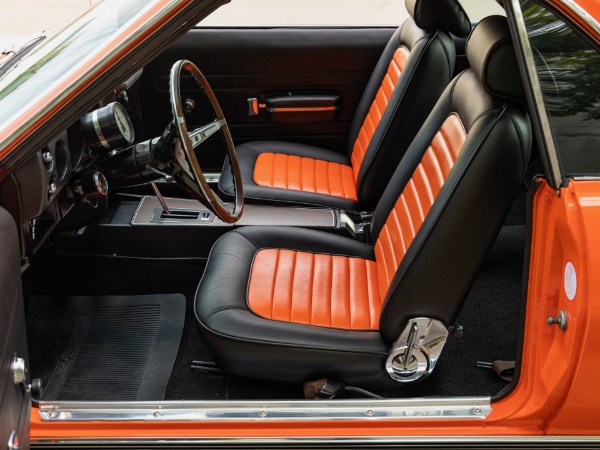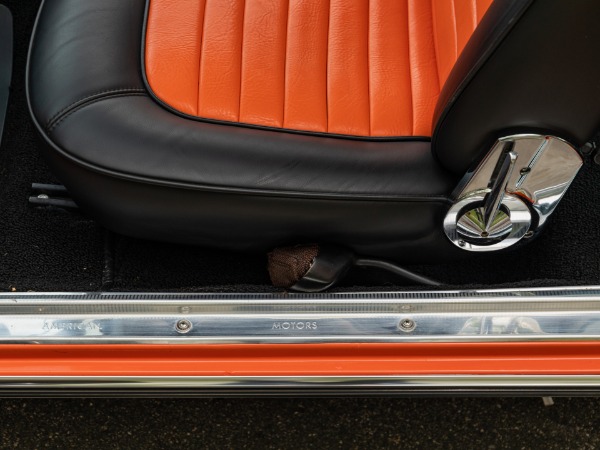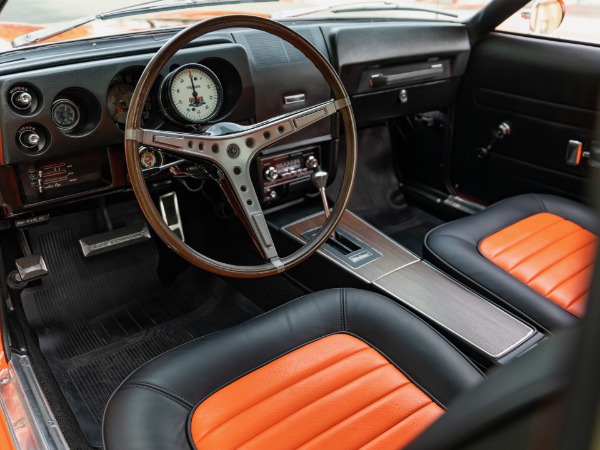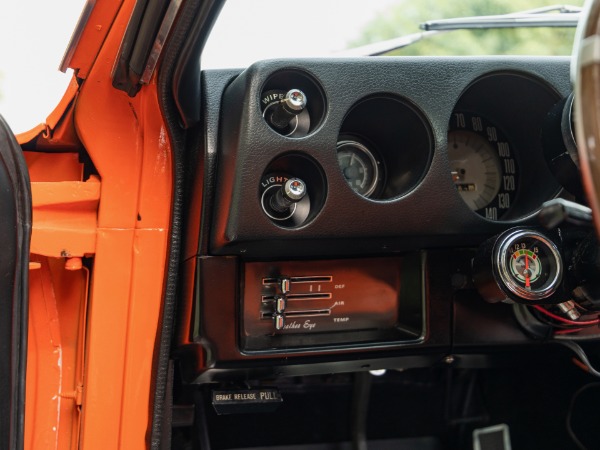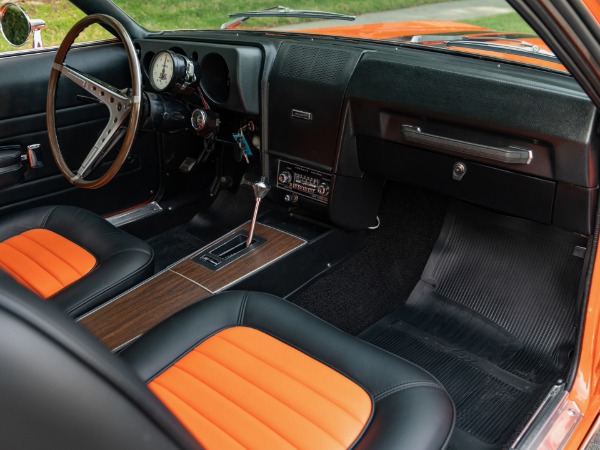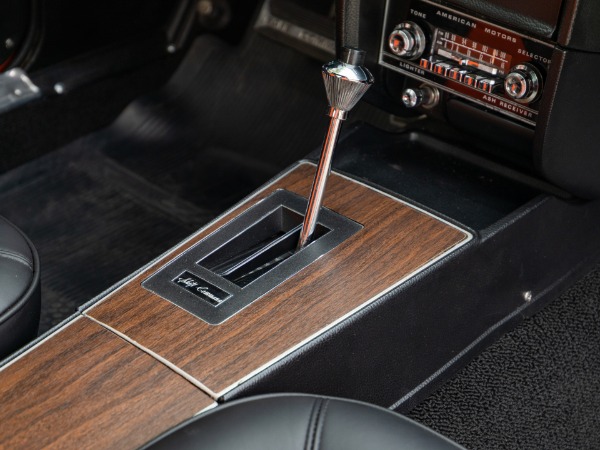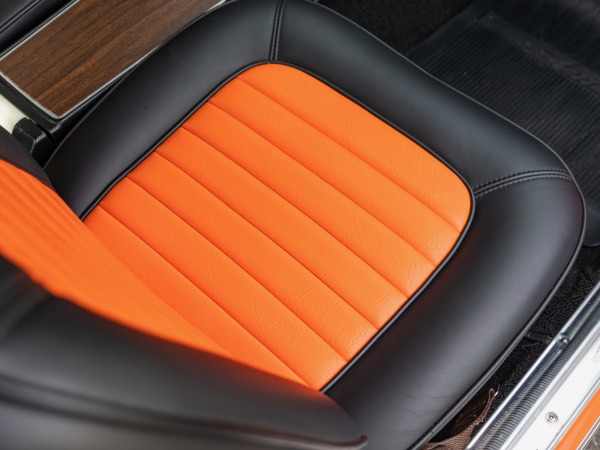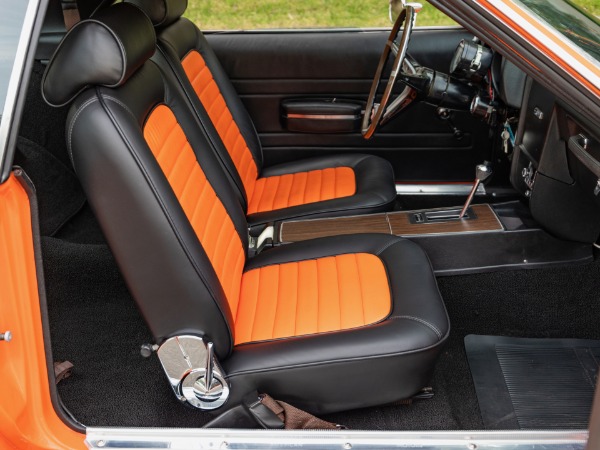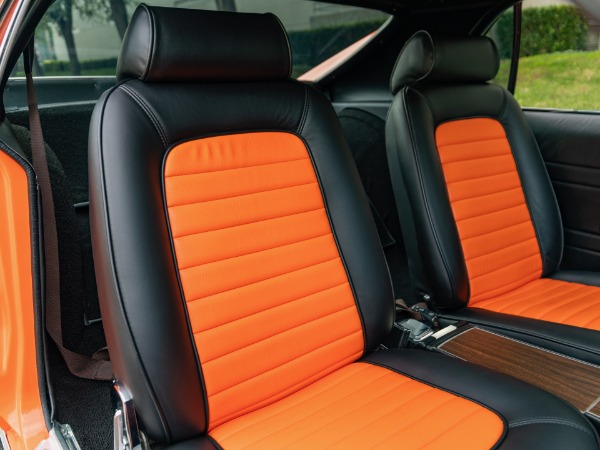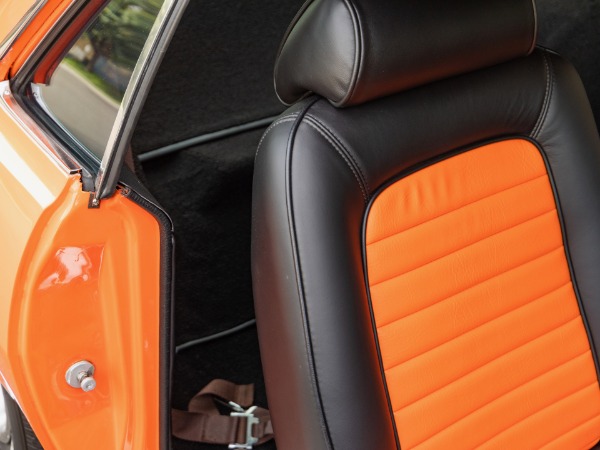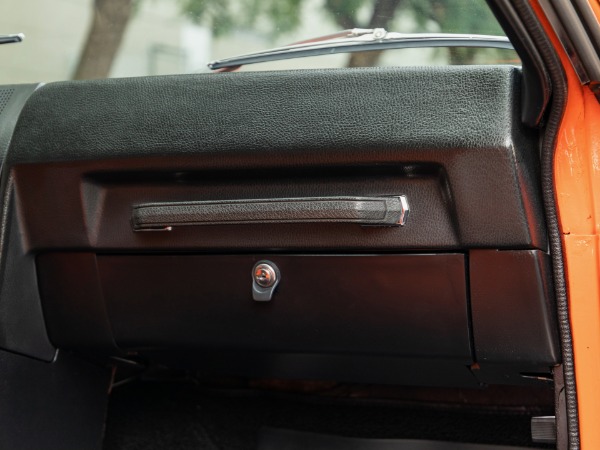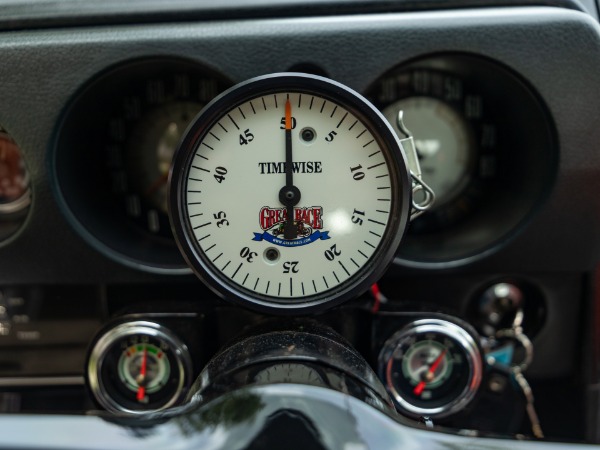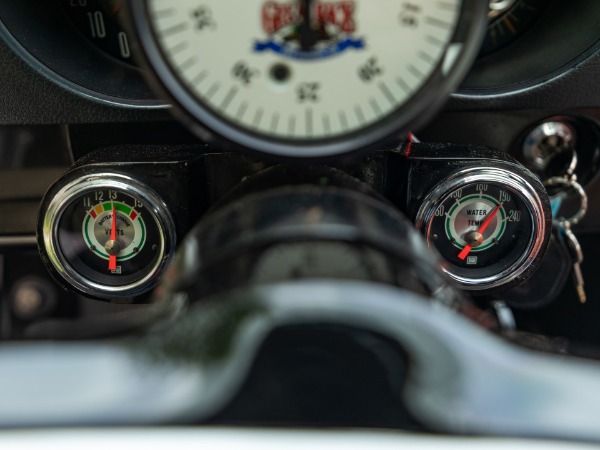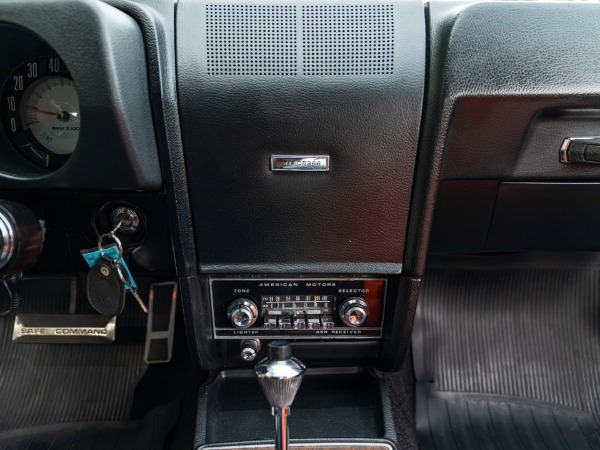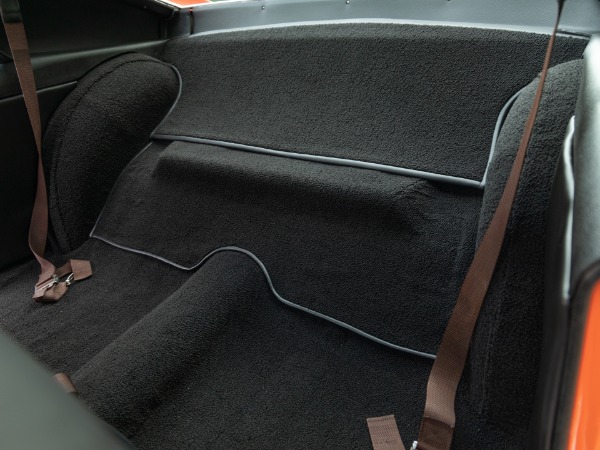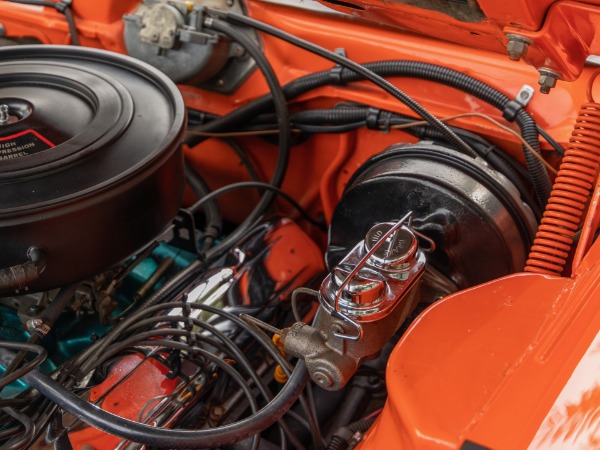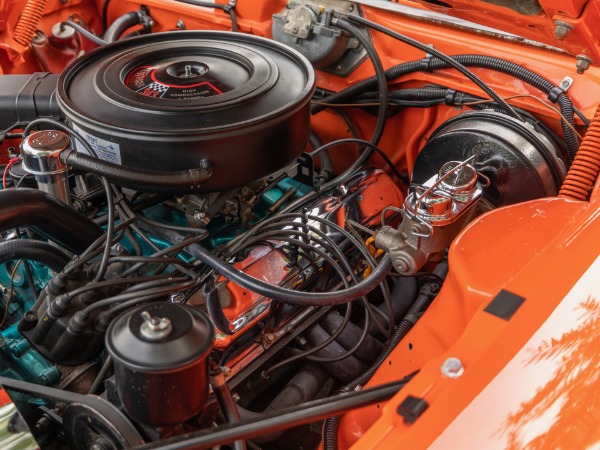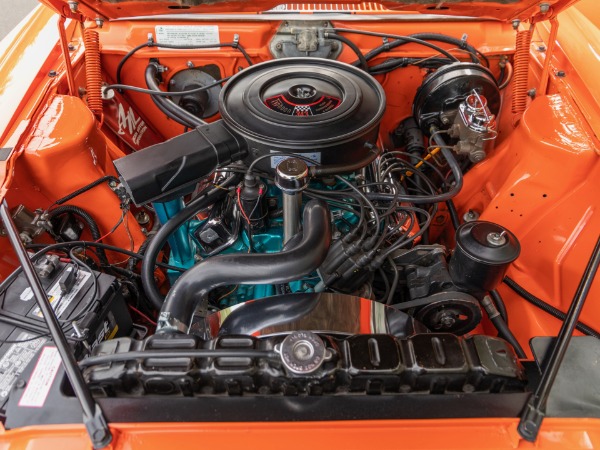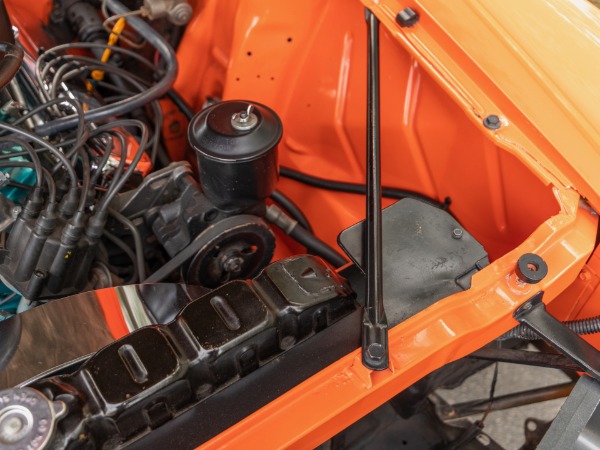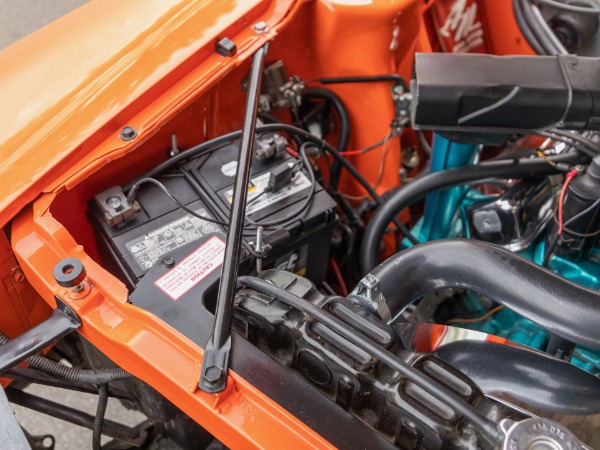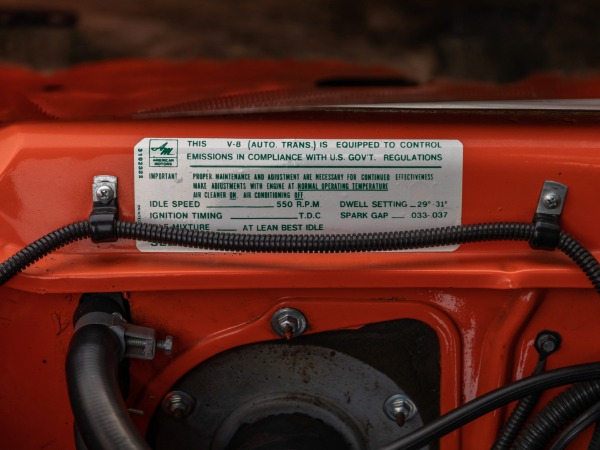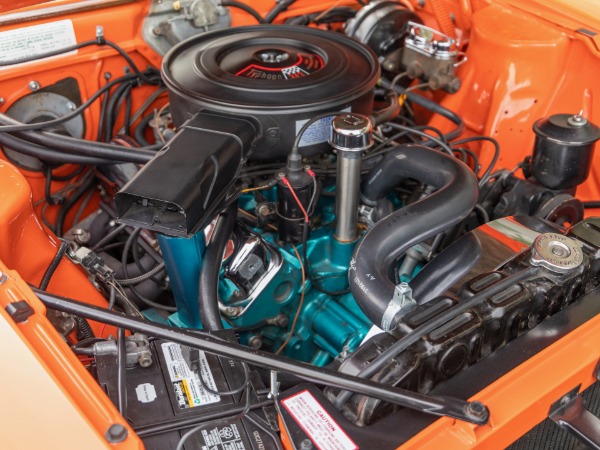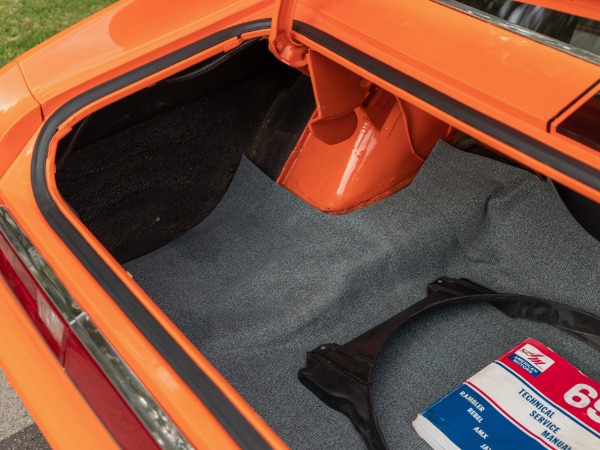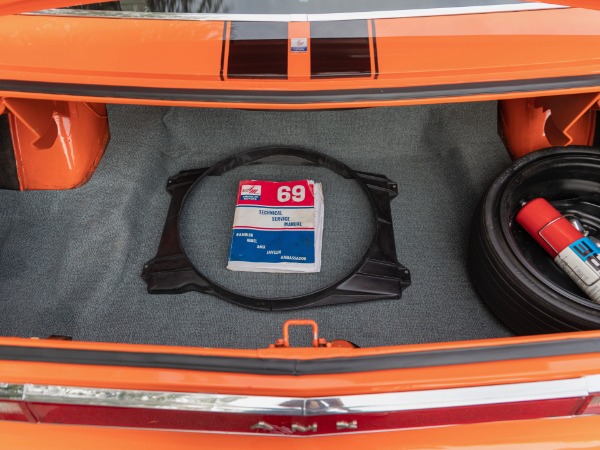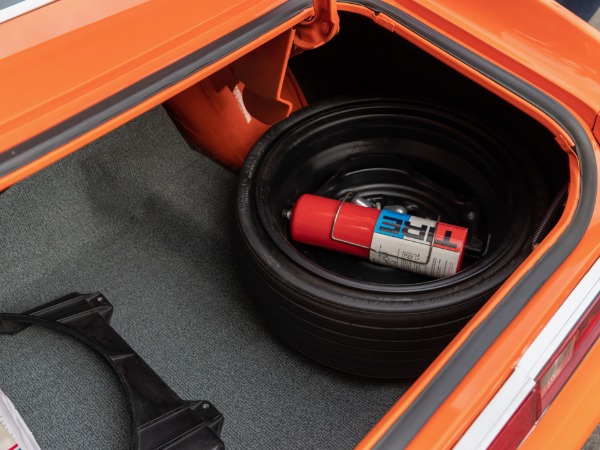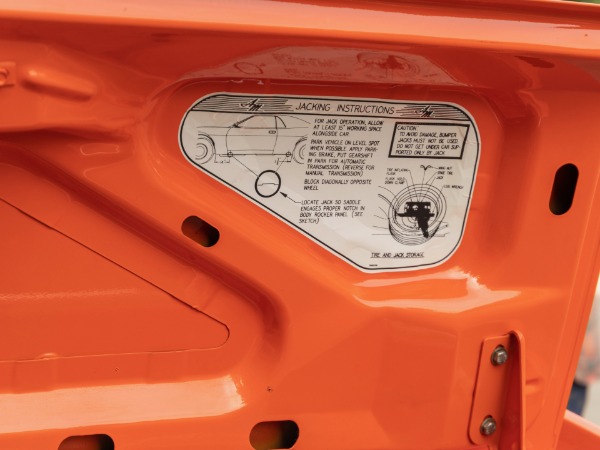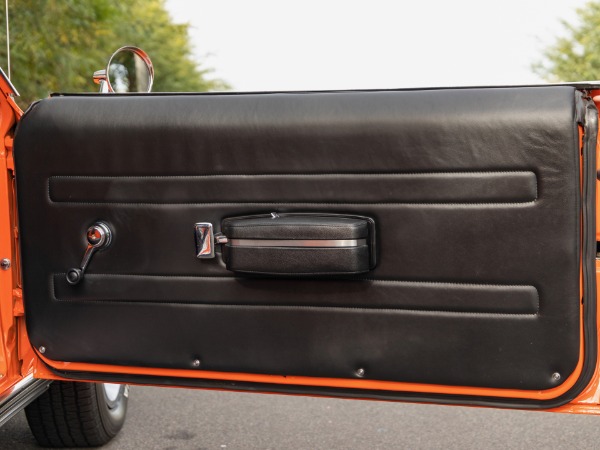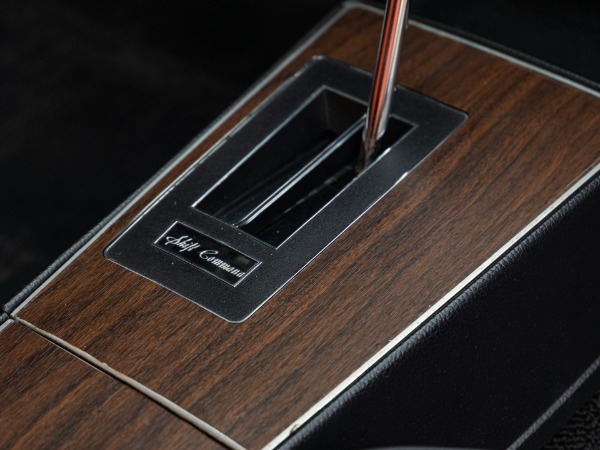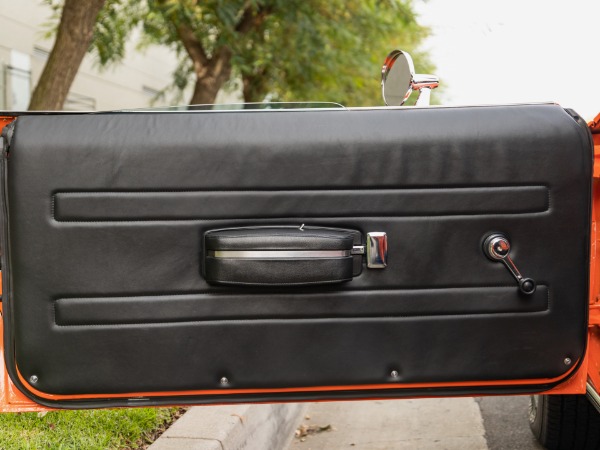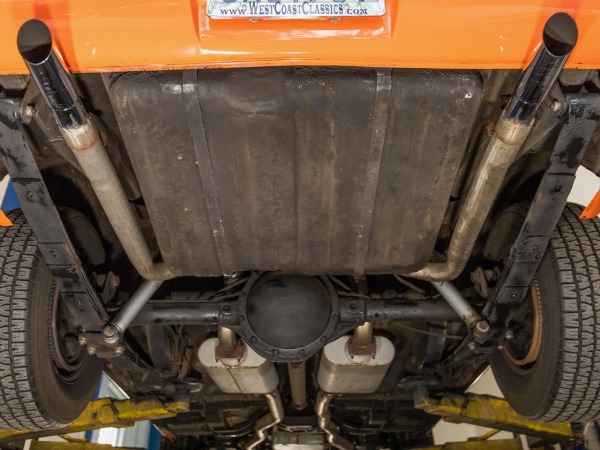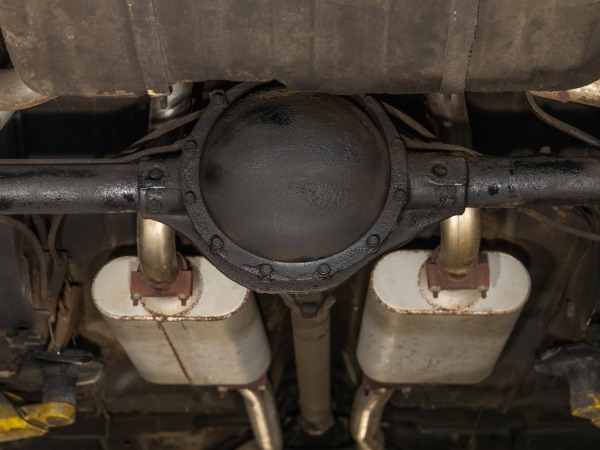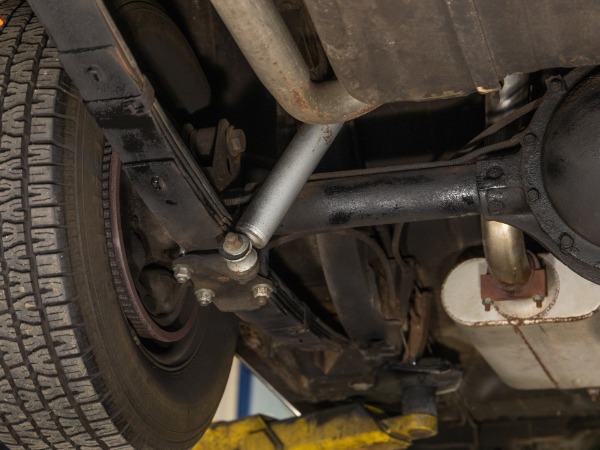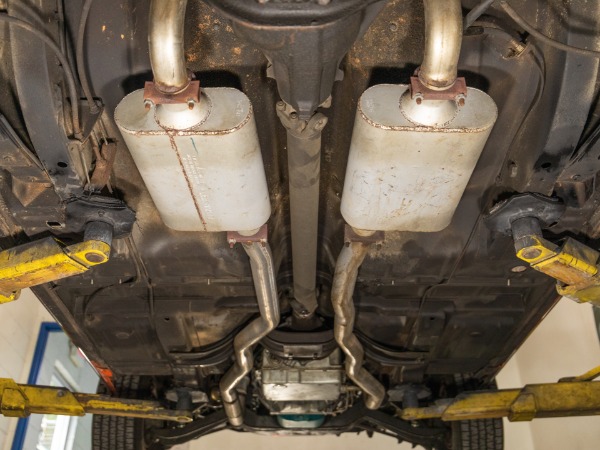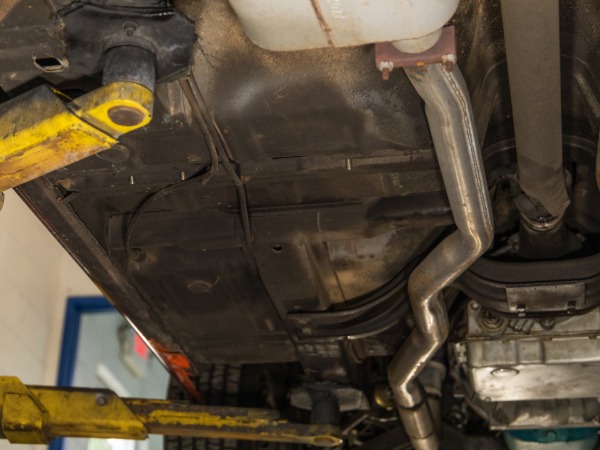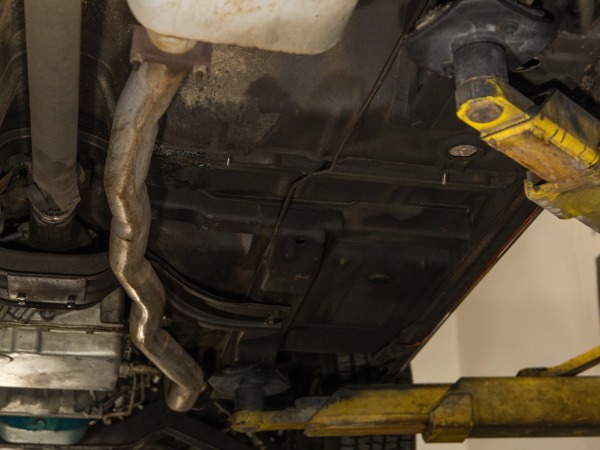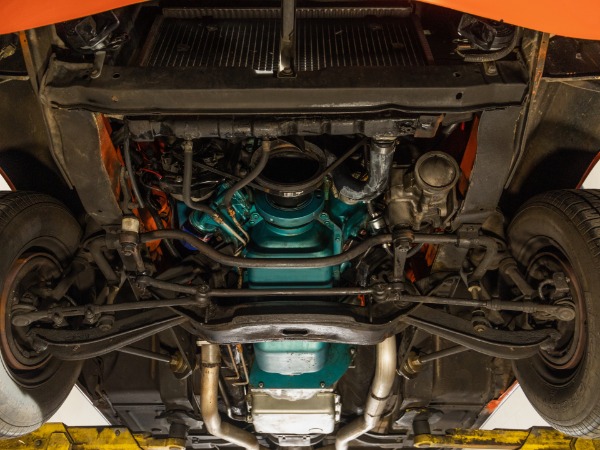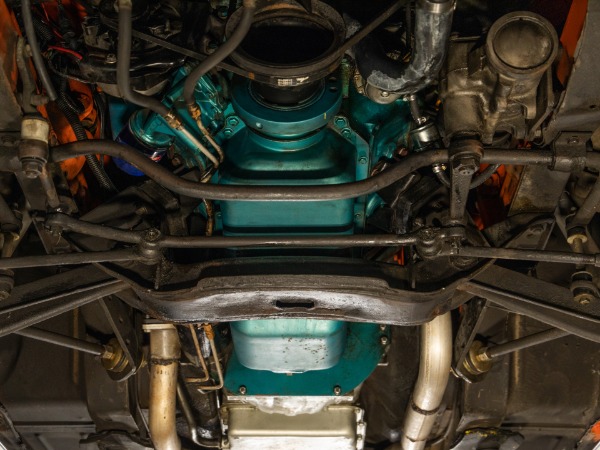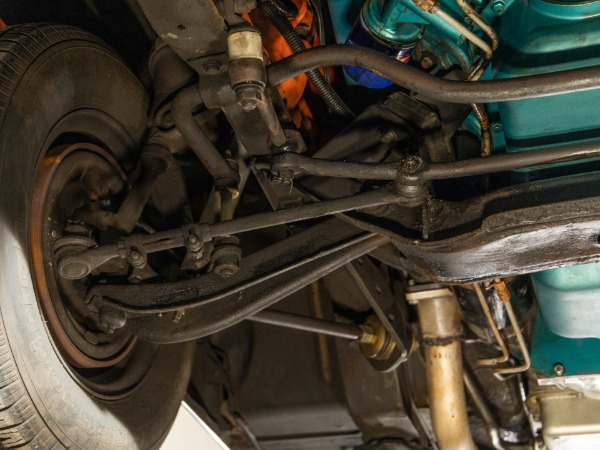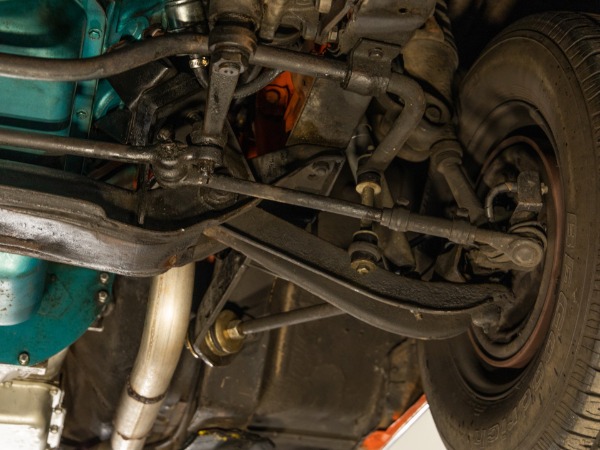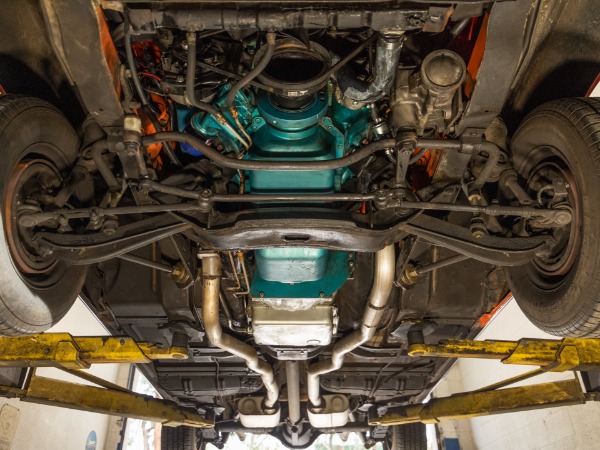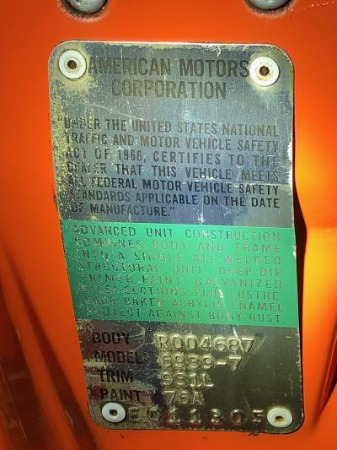West Coast Classics are proud to present an absolutely exceptional example of this beautifully restored 1969 AMC AMX rare 'T' code 343/280HP 4BBL 'Typhoon High Compression' V8 2 door Sport Coupe # 'AMX08966' matched to a 'Shift Command' floor shifter automatic transmission ($66 option) and which has been repainted in the striking 'Big Bad Orange' color with Black sports stripes and with a striking matching 'Orange & Black' reupholstered bucket seats interior with center console interior and fully loaded with original factory options including Power Steering, 'Safe Command' Power Brakes, Wood Grain Sports Steering Wheel & door panel trim, reclining bucket seats, rocker panel moldings & original AM/FM Radio! 1 of only 729 AMX's built in 1969 with the 343 V8 engine & only 1,631 in total production & there were only 285 original Big Bad Orange cars ever built which this particular car was repainted to resemble. The car placed 3rd in the 'Class N-3 pony Cars through 1973' at the prestigious 'San Marino, CA Concours D'Elegance' last year, one of the premier concours-level exhibitions in the U.S.A.
In 1968 the Javelin was an all new creation designed to compete with the Mustang and Camaro and unlike the Marlin which had preceded it, the Javelin showed no visible link to any other AMC product. It was a beautifully designed and under-rated competitor with a sculpted design and which even with the standard six cyinder engine could cruise effortlessly at 70mph and with one of the optional V8's it was capable of much higher cruising speeds with a top end of over 110mph! The top of the line AMC model was the AMX which boasted standard equipment of sporty reclining bucket seats, wood grain sports steering wheel and door panel trim, rocker panel moldings, wheel covers and hood scoop moldings. Today we feel these models are a bargain compared to their contemporaries, the Mustang's and Camaro's. The AMX was a very modern looking car, even by today's standards, and it was quite unlike any car of its day.
The AMC AMX was a two-seat GT-style muscle car produced by American Motors Corporation from 1968 through 1970 and as one of just two American built two seaters, the AMX was in direct competition with the Chevrolet Corvette for substantially less money. It was based on the new for 1968 Javelin, but with a shorter wheelbase and deletion of the rear seat. In addition, the AMX's rear quarter windows remained fixed, making it a coupe, while the Javelin was a true two-door hardtop. The AMX name originates from the 'American Motors Experimental' code used on a concept vehicle. One was a fiberglass two-seat "AMX", and the other was a four-seat "AMX II". Both of these radically styled offerings reflected the company's strategy to appeal to a more youthful, performance-oriented market.
The AMX was also the only mass-produced, domestic two-seater to share the market with Chevrolet's Corvette since the 1957 Thunderbird. With a shorter wheelbase, the AMX's direct competition was the one-inch longer Corvette and was introduced to the press at the Daytona International Speedway on 15 February 1968; just over four months after the Javelin went on sale. In the demonstrations on the race track, the new AMXs ran at speeds up to 130 mph with the American Motors' group vice president described the AMX as "the Walter Mitty Ferrari".
In January 1968, two specially-prepared AMXs set 106 world speed and endurance records at Goodyear's track in Texas as a way to promote the new car. The AMX was not only sporty and attractive, but it introduced many industry firsts. The American Society of Automotive Engineers named the AMX as the "best engineered car of the year" in 1969 and 1970. For its first year recognition, the reasons cited included the car's dashboard, which was injection-molded in one piece "for safety purposes, an industry first."
All AMXs came with four-barrel carbureted small block AMC V8 engines in several versions: 290ci 225 hp (N code), 343ci 290 hp (T-code), as well as the 390ci featuring 315 hp. All derived from the same external sized block. However, the three engines differed vastly internally, with the smallest engine having small intake and exhaust valves, thin block webbing, and a cast nodular iron crankshaft; the 343 used larger valves with a thicker block webbing; and the 390 moved up to a forged steel crankshaft and connecting rods, as well as larger rod bearings. A BorgWarner T-10 four-speed manual transmission was standard, as were special traction bars, dual exhaust system, and fatter tires for better traction. A "Shift-Command" three-speed automatic transmission with the capability of manual shifting (BorgWarner model M-11B or M-12) was optional together with a floor console mounted shifter.
A popular "Go-Package" option came with either the four-barrel 343 or 390 engine and included power-assisted front disk brakes, "Twin-Grip" differential, E70x14 red-stripe performance tires on 6" wide steel wheels, heavy-duty suspension with thicker sway-bars, heavy-duty cooling, as well as other performance enhancements. The five-spoke Magnum 500 steel road wheels were no longer chrome plated, but now came with a stainless steel trim ring. The racing stripes were now available in five colors. The interior featured a revised instrumentation with the 08000 rpm tachometer moved to match the speedometer that was now calibrated to 140 mph. Interior door panels were revised, carpeting was upgraded, new leather upholstery was optional, and the gas pedal became suspended.[56] Later production cars received a hood over the instruments in front of the driver. The center console-mounted three-speed "Shift-Command" automatic remained optional with "1", "2", and "D" forward settings. The "D" mode was for fully automatic operation, but the driver could shift manually through all three gears by starting out in the "1" setting for first-gear with no upshift, then the "2" setting for second-gear with no upshift, and finally to third-gear in the "D" setting.
A "Big Bad" paint option for $34 became available starting in mid-1969. The neon brilliant blue (BBB), orange (BBO), and green (BBG) exteriors included color-matched front and rear bumpers, as well as a special slim bright lower grille moulding for the front bumper and two vertical rubber-faced painted bumper guards for the rear. The factory-painted 1969 AMXs were 195 in BBB, 285 in BBO, and 283 in BBG.
This particular car repainted in the 'Big Bad Orange' color must be seen to be appreciated - boasting the 343/290HP 4BBL V8 engine which runs like a Swiss watch, the 3 speed automatic transmission shifts smoothly through the gears and the engine temperature always remaining cool. This is a obviously a very rare find and a stunning example of a 1969 AMC AMX 2 Door Coupe which is one very fun daily appreciating, daily driving and daily head-turning all time classic American car! Perfect unique and rare classic car to be used as a daily driver for any serious American muscle car enthusiast or simply a great looking late sixties all American classic muscle car for anyone!





